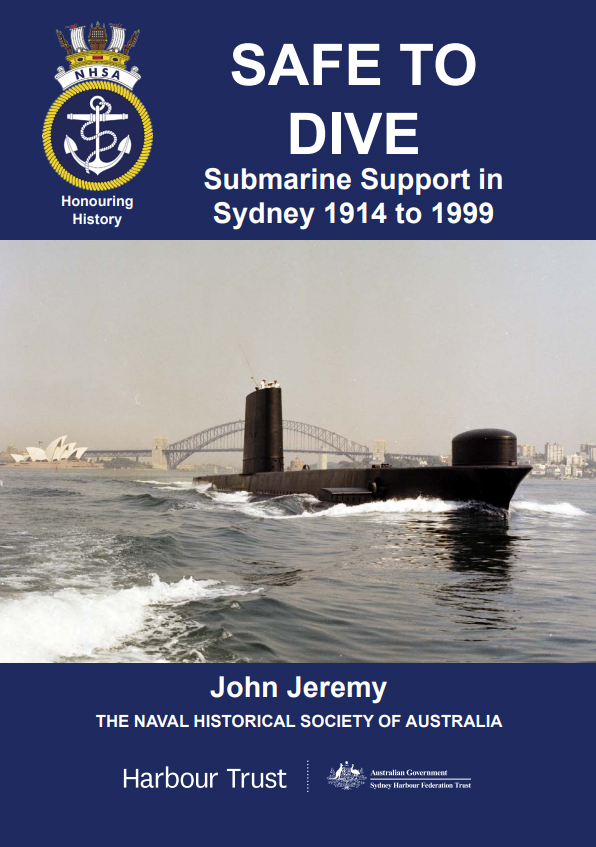
Safe to Dive – Submarine Support in Sydney 1914 to 1999. By John Jeremy. Published by The Naval Historical Society of Australia 2023, under licence agreement with the Sydney Harbour Federation Trust.
Reviewed by John Mortimer
Author, John Jeremy, is eminently suited to write on this subject. His employment at Cockatoo Island commenced in January 1960 when he was appointed as an apprentice ships draughtsman. In 1981 he was appointed as the Managing Director (later titled Chief Executive) of Cockatoo Dockyard and remained in that position until the dockyard’s closure in 1992. In 1998 John’s book “Cockatoo Island – Sydney’s Historic Dockyard” was published by the University of New South Wales Press.
Safe to Dive details the history of repair and maintenance of Australia’s submarine forces up until the introduction of the Collins class. The earlier years covering AE1 and AE2, the J class (the first Oxley and Otway), and the Dutch submarine K9 are covered in some detail. However, the Royal Navy submarines and the Oberon class are dealt with in considerable depth, as is the infrastructure and capabilities residing at Cockatoo Island Dockyard. Even the restoration work on the Japanese midget submarine is addressed. There is also analysis of the background and options to support Oberon refits resulting in the construction of the Slave Dock.
Submarine Depot Ship Platypus and shore-based support infrastructure is discussed, including the RAN Torpedo Maintenance Establishment and HMAS Platypus at Neutral Bay.
Photographic coverage is excellent, of high quality, and supports the text well. I particularly enjoyed several photos I had not seen before, including photos of the K9 in Morts Dock, Balmain and J1 in Sutherland Dock, Cockatoo Island. The photograph of Submarine Superintendent Joe Lamb in the dismantled engine room of HMAS Oxley in 1977 provides an indication of the extent of work carried out during refit. The author also includes several plans of submarines, Cockatoo Island and other infrastructure, as well as a copy of relevant documents. Some of the ship plans are challenging to read and would have benefitted from being reproduced in larger format.
I thoroughly enjoyed this book. While its approach is historical, it also raises concerns over the likely challenges that we face with the introduction and support of nuclear submarines. Clearly, the expertise built up at Cockatoo was fundamental to the operation and modification of the Oberon class in Australia and its demise and loss of skills may have impacted the problems we would subsequently face with Collins class support.
The book can be purchased direct from the Naval Historical Society of Australia’s website at: sales@navyhistory.au for $15 PDF, or $50 hardcover and postage (Australia) $65 hardcover and postage (overseas).



